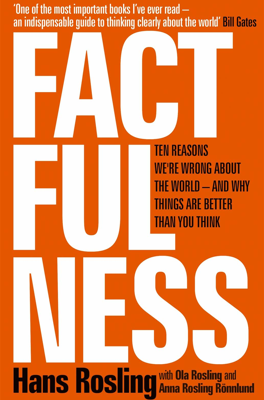The Single Perspective Instinct
The allure of simple ideas: Humans are drawn to simple explanations and solutions, finding satisfaction in understanding complex issues through a singular lens. This "single perspective instinct" is compelling because it structures our understanding swiftly and efficiently. However, this approach often oversimplifies reality, leading to a skewed perception of the world.
Dangers of a singular viewpoint: Holding strongly to a single cause or solution can blind us to other important aspects of an issue. For instance, staunch advocates for free markets might overlook important roles that government regulation can play, while strong proponents of equality might dismiss the benefits that come from market-driven growth. These singular perspectives can inhibit our understanding and response to complex problems.
Test and question your favorite ideas: It's crucial to challenge and examine your favored viewpoints regularly. Seek input from those who disagree and consider contradictory information as a valuable resource for deeper understanding. This helps prevent the narrow vision that comes with clinging too tightly to one perspective or solution.
Experts, Activists, and the Limitations of Specialized Knowledge
Experts have their limits: While experts are indispensable for detailed understanding within specific fields, their expertise doesn't automatically extend to other areas, and even within their own fields, they might lack holistic understanding. For instance, brilliant scientists, regardless of their accolades, might score poorly on global knowledge questions outside their specialization.
Activists and the risk of exaggeration: Activists, while driven by commendable motives, often focus intensely on their causes, sometimes at the expense of broader context. This can lead to exaggerated portrayals of problems without acknowledging significant progress. Recognizing and communicating improvements might engage and motivate people more effectively than a constant emphasis on negative aspects.
Practical Insights and Approaches for a Balanced Perspective
Embrace a toolbox approach: Just as using only a hammer makes every problem look like a nail, relying solely on a favored tool or perspective can distort understanding. Instead, gather a 'toolbox' of different strategies and viewpoints. Engage with others who bring complementary tools and perspectives to bear on a problem.
Numbers and narratives: While quantitative data is essential for understanding many aspects of the world, numbers alone can't provide a complete picture. Personal experiences, qualitative observations, and diverse narratives are vital for a full understanding. For example, a prime minister might learn more about economic progress by observing the condition and type of shoes on people’s feet during a parade, rather than solely relying on economic statistics.
Complex solutions for complex problems: Reject the allure of simple, one-size-fits-all solutions. Complex issues often require nuanced approaches that consider different angles and incorporate multiple solutions. Be open to compromise and adaptability, addressing issues on a case-by-case basis.
Through understanding and addressing the limitations of the single perspective instinct, we can develop a more nuanced and effective approach to tackling the world's complexities. This involves acknowledging the edges of our knowledge, engaging with diverse opinions, and using a variety of tools to build a more comprehensive understanding.
